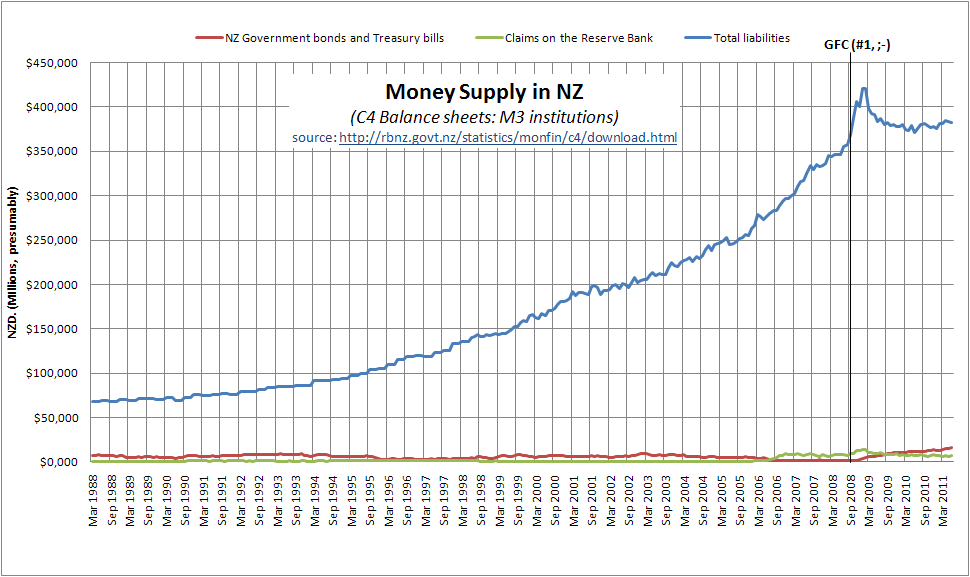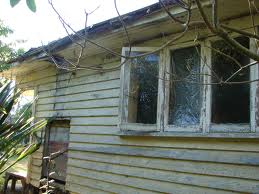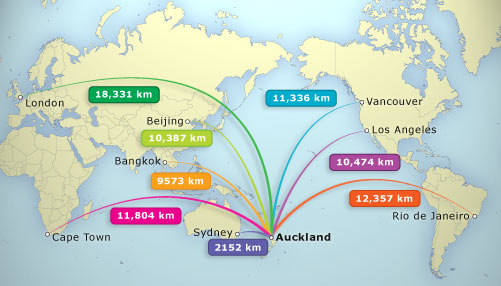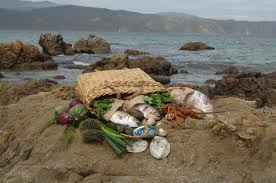1. New Zealand has an unacceptable unemployment rate of 6.5% or 154,000 unemployed as of 4 Aug 2011. There is plenty of work to do and most people say there is not the money to pay people.
2. According to a report in 2001 by Every Child Counts, up to 270,000 children live in poverty. Every Child Counts (ECC) is a coalition of non-governmental organizations and individuals working to improve the status and wellbeing of New Zealand children. The coalition is driven by Barnardos, Plunket, UNICEF, Save the Children and Te Kahui Mana Ririki. Half of these are Maori or Pacifika.
3. Small and medium sized businesses, who create the vast majority of jobs, say they have too much red tape. In New Zealand, our 350,000 or so SMEs (less than 100 employees) make up more than 99% of all businesses and account for about 60% of employment. (Massey University).
4. The money supply in NZ has increased until the end of September 2008 but has declined since then and is now static. (RBNZ website). The money supply is related to the ability to spend on wages and salaries. 4. New Zealand’s debt (corporate and government combined) is growing. In the three months between Mar 2011 and June 2011 it increased 15%. It is now $50,000 per person. The increase in the two years between June 2009 and June 2011 was 38%. All this has to be paid back by our children and grandchildren at interest. (Ref:www.rbnz.govt.nz) Moreoever our credit rating was downgraded in September 2011 by two agencies, bringing threats of higher interest rates.
4. New Zealand’s debt (corporate and government combined) is growing. In the three months between Mar 2011 and June 2011 it increased 15%. It is now $50,000 per person. The increase in the two years between June 2009 and June 2011 was 38%. All this has to be paid back by our children and grandchildren at interest. (Ref:www.rbnz.govt.nz) Moreoever our credit rating was downgraded in September 2011 by two agencies, bringing threats of higher interest rates.
5. With global oil production having peaked in 2006 (International Energy Agency) we are faced with feeding ourselves and meeting our housing, energy and other basic needs. If an oil tanker suddenly didn’t arrive, we would be faced with empty supermarket shelves within three days. We are also dependent on gas. When the Maui gas pipe broke supermarket bread shelves emptied within days. When the Soviet Union collapsed in 1990, Cuba became the first country faced with the peak oil crisis. Suddenly a supply of 13 million tons of oil a year dropped to a trickle and the population lost weight for three years. Food consumption was cut back to one-fifth of their previous levels and the average Cuban lost about nine kilograms (twenty pounds). Although starvation was avoided, persistent hunger, something not seen since before the Cuban Revolution, suddenly became a daily experience. If things go smoothly with tankers, we will still need to cut back our oil consumption by 4-6% per year each year.
Although we produce half of all our food we do not appear to be able to control the rise in food prices. In 2010 food prices rose 4.6% and, according to NZIER (18 Jan 2011), this trend will continue. They say it is not just a bonanza to NZ exporters. Higher food prices mean reduction of purchasing power and this will harm the NZ economy. There are no winners from higher food prices.
We only have one currency, the NZ dollar. If this falls in relation to the US dollar the price of our imports rise, in particular the price of oil and this harms our economy. We are tied in to a global economy.
Like other economies, ours is going to be detrimentally affected by climate change. Effective climate change policies are therefore all the more urgent.
We have a failed economic system. It didn’t work before peak oil and it certainly won’t work after the peak. This applies both to the New Zealand economy and the global economy.



